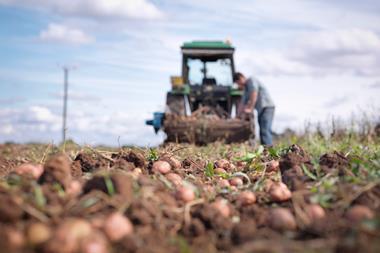
Credit where it’s due: the UK government’s new food strategy represents genuine progress. By acknowledging that our food system is caught in self-reinforcing cycles of poor health, environmental damage and growing vulnerability to shocks, it shows much-needed joined-up thinking from Whitehall.
The 10 outcomes – from transforming food environments to building resilient supply chains – form a coherent whole rather than the traditional siloed approach. This is the approach that businesses and civil society have been calling for.
But here’s the rub: without legal commitments, even this well-crafted framework remains vulnerable to political winds. We need foundations that outlast ministerial shuffles. We need a right to food.
The right to food
Establishing a right to food would form a significant part of the basis needed to realise the food strategy’s goals. It’s a legal framework that makes government accountable for ensuring everyone can access adequate, nutritious, culturally appropriate food with dignity. This means every decision – from benefit levels to planning applications – must consider food security.
When agricultural policy, health initiatives, and trade deals must all demonstrate how they protect access to food, we get co-ordination that makes strategies actually work. A rights-based approach would strengthen each outcome. Take resilient domestic production or sustainable supply chains – under a right to food, these aren’t just nice-to-haves, but legal necessities.
Government must ensure the food system keeps functioning, especially for the most vulnerable. That creates predictable, long-term market signals that businesses need for investment decisions – directly supporting the strategy’s aim for the food sector to thrive and grow sustainably.
Or consider the commitment to improving the accessibility and affordability of healthier and more appealing food. With right to food legislation, ensuring wages and benefits can cover nutritious food becomes a legal duty, not a political choice. For businesses, that means a stable demand for quality products rather than a race to the bottom on price.
Scotland and Northern Ireland’s experiences are instructive. Scotland’s Good Food Nation Act moves beyond aspiration by requiring concrete plans with measurable goals – though implementation remains a work in progress. Northern Ireland has taken a complementary approach, embedding the right to food as a guiding principle in its Food Strategy Framework and taking specific cross-departmental actions to implement it.
Both nations show what’s possible when access to food is treated as a fundamental right. Scotland’s attempt to embed food rights in a human rights bill may have stalled, but it showed what might be achieved. England can learn from their achievements and challenges.
Aligning goals
In a business landscape of constantly shifting priorities – new subsidy schemes, changing sustainability targets, evolving health regulations – a right to food provides the organising principle that aligns goals and structures. When departments can’t work in silos because they share legal responsibility for food access, policy becomes more predictable, and pathways become smoother.
The private sector invests billions in UK food. Companies deserve stability to plan beyond the next election cycle. A right to food transforms the government’s thoughtful strategy from ambitious ideas to firm commitment, enabling businesses to invest confidently in a healthier, more sustainable future.
Food businesses should champion a right to food – not as a magic bullet but as essential infrastructure that provides the certainty lacked by more volatile markets. The government has done impressive work connecting the dots. Now we need the legal architecture to make those connections permanent.
Elta Smith, chair of the Food Ethics Council



















No comments yet